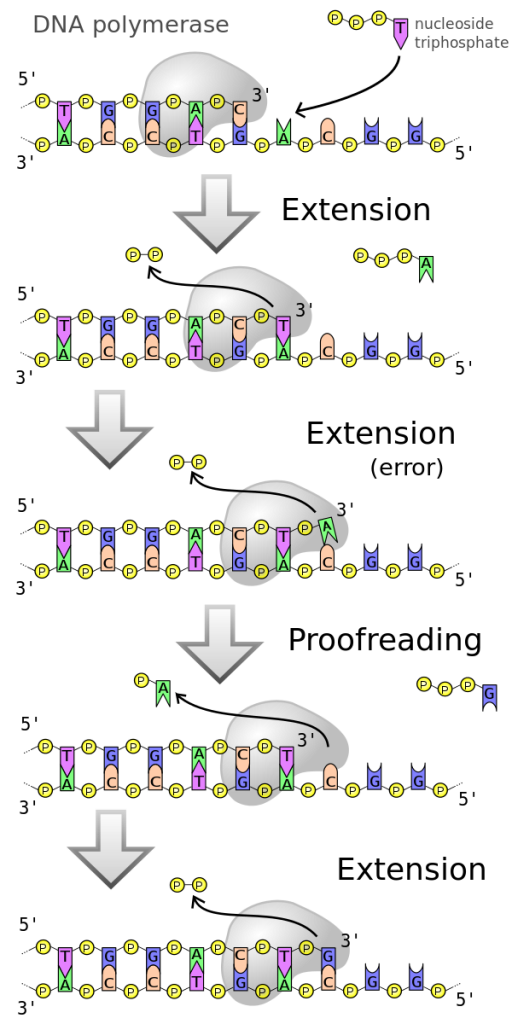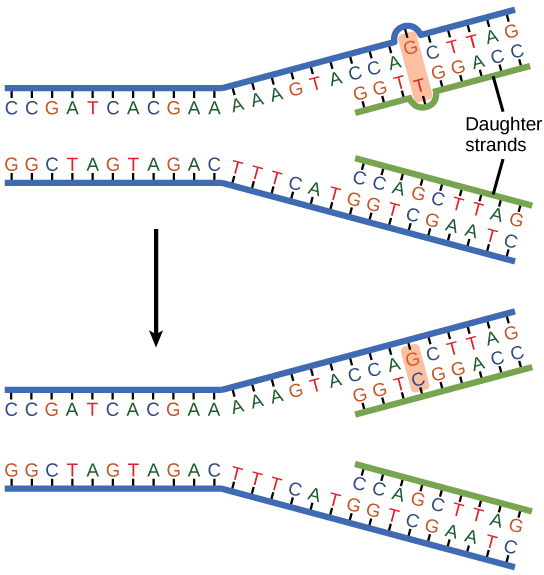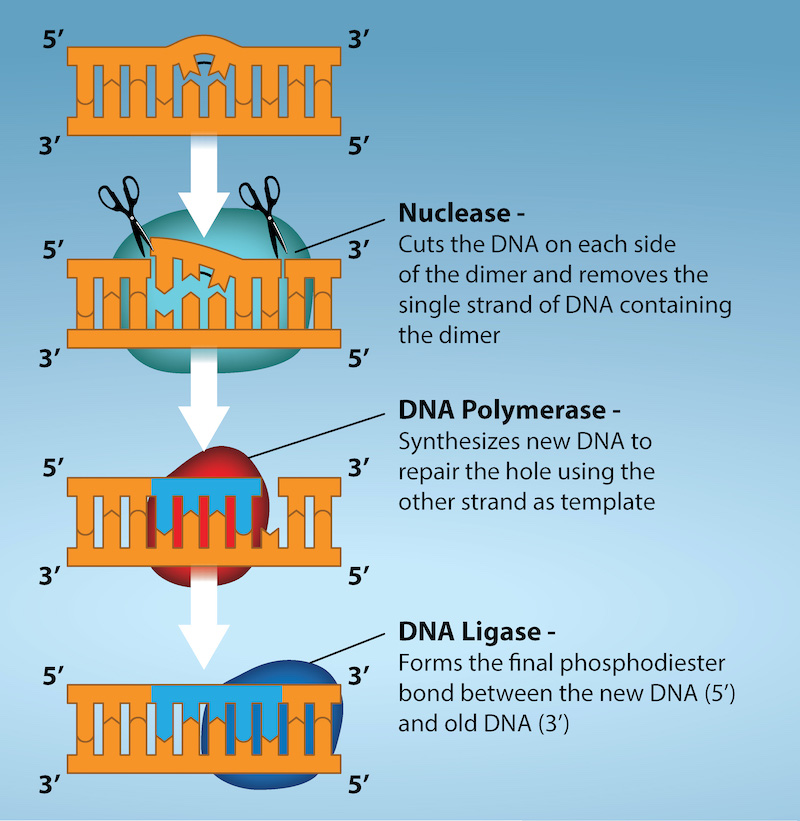32 DNA Repair
DNA replication is a highly accurate process, but mistakes can occasionally occur. If these mistakes are not corrected, this can lead to a mutation: a change in the sequence of DNA. Uncorrected mutations may sometimes lead to serious consequences, such as cancer. One way that a mutation can occur is through DNA polymerase inserting a wrong base. Repair mechanisms typically correct these mistakes, but they occasionally fail to correct the error.
Most of the mistakes during DNA replication are promptly corrected by DNA polymerase (the enzyme that builds new DNA during replication) by proofreading the base that has been just added (Figure 1). In proofreading, the DNA polymerase reads the newly added base before adding the next one, so a correction can be made. The polymerase checks whether the newly added base has paired correctly with the base in the template strand. If it is the right base, the next nucleotide is added. If an incorrect base has been added, the enzyme makes a cut at the covalent bond and releases the wrong nucleotide. Once the incorrect nucleotide has been removed, a new one will be added again (Figure 1).

Some errors are not corrected during replication, but are instead corrected after replication is completed (Figure 2). The enzymes recognize the incorrectly added nucleotide and excise it; this is then replaced by the correct base. If this remains uncorrected, it may lead to more permanent damage.

In another type of repair mechanism, enzymes replace incorrect bases by making a cut on both sides of the incorrect base (Figure 3). The segment of DNA is removed and replaced with the correctly paired nucleotides by the action of DNA polymerase. Once the bases are filled in, the remaining gap is sealed by an enzyme called DNA ligase. This repair mechanism is often used when UV exposure causes two thymines to become connected to each other into a thymine-thymine dimer (the small – connecting the two Ts in Figure 3).

A well-studied example of mistakes not being corrected is seen in people suffering from xeroderma pigmentosa (Figure 4). Affected individuals have skin that is highly sensitive to UV rays from the sun. When individuals are exposed to UV, thymine-thymine dimers are formed. Normally, these dimers could be are cut out and repaired, but people with xeroderma pigmentosa are not able to repair the damage because of a defect in the repair enzymes. The thymine dimers distort the structure of the DNA double helix, and this causes problems during DNA replication. People with xeroderma pigmentosa have a higher risk of developing skin cancer than those who don’t have the condition.

Errors during DNA replication are not the only reason why mutations arise in DNA. Mutations can also occur because of damage to DNA. Mutations can result from an exposure to a mutagen: chemicals, UV rays, x-rays, or some other environmental agent. Mutations can also occur without any exposure to any environmental agent; they are a result of natural reactions taking place within the body.
Mutations may have a wide range of effects. Some mutations have no effect on the protein produced by the organism; these are known as silent mutations. Other mutations can have serious effects on the organism (such as the mutation that causes xeroderma pigmentosa).
Mutations in repair genes have been known to cause cancer. Many mutated repair genes have been implicated in certain forms of pancreatic cancer, colon cancer, and colorectal cancer. Mutations can affect either somatic cells or gametes. If many mutations accumulate in a cell, they may lead to problems such as the uncontrolled cell division observed in cancer. If a mutation takes place in a sex cell, the mutation can be passed on to the next generation.
References
Unless otherwise noted, images on this page are licensed under CC-BY 4.0 by OpenStax.
OpenStax, Concepts of Biology. OpenStax CNX. December 21, 2017. https://cnx.org/contents/GFy_h8cu@10.120:MPy5UMKm@7/DNA-Repair

